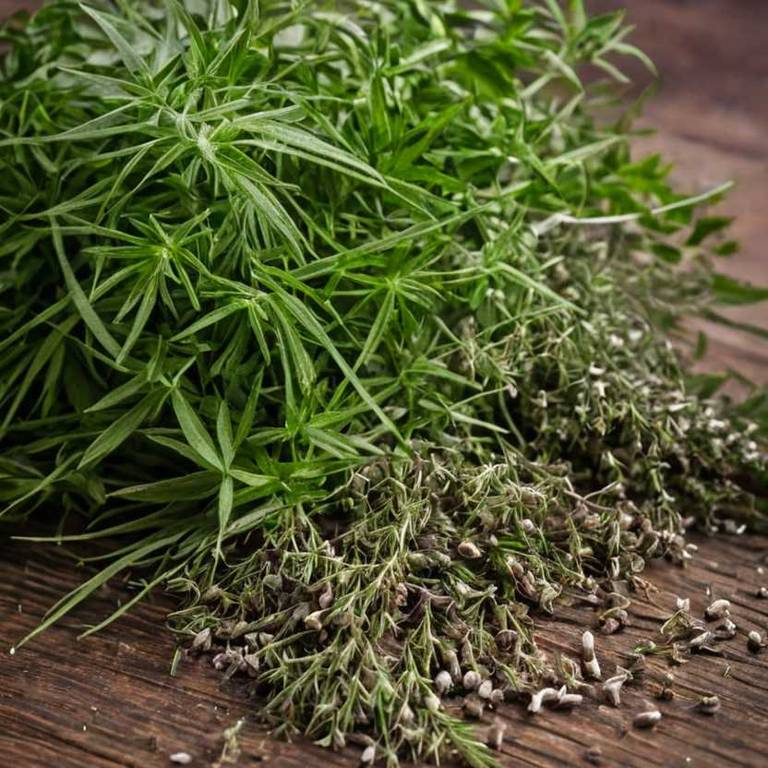By Leen Randell
Updated: Jul 20, 2024
10 Medicinal Constituents Of Huperzia Serrata (Club Moss)

Huperzia serrata has active constituents such as huperzine A, which is a potent acetylcholinesterase inhibitor.
These constituents provide medicinal properties such as neuroprotection and memory enhancement. Huperzine A has been shown to improve cognitive function and symptoms in patients with Alzheimer's disease, allowing them to maintain independence and quality of life.
Additionally, its antioxidant properties can help prevent neurodegenerative diseases and improve overall brain health.
This article explains in details the 10 best active constituents of Huperzia serrata.
1. Huperzine a
Huperzia serrata huperzine A is a naturally occurring substance extracted from its leaves.
It has been used in traditional Chinese medicine for centuries to treat various ailments, including fever, rheumatism, and snake bites.
Huperzine A is a powerful acetylcholinesterase inhibitor, which means it increases the levels of neurotransmitter acetylcholine in the brain, leading to improved memory, attention, and cognitive function.
2. Polyphenols
Huperzia serrata polyphenols is a class of bioactive compounds found in this traditional Chinese medicinal plant.
These polyphenols have been shown to exhibit various pharmacological activities, including antioxidant, anti-inflammatory, and antimicrobial properties.
They are believed to contribute to the plant's traditional uses in treating respiratory disorders, such as bronchitis and asthma.
3. Flavonoids
Huperzia serrata flavonoids is a group of plant compounds found in its leaves and stems.
These flavonoids have been studied for their potential health benefits, including antioxidant and anti-inflammatory activities. They have been shown to inhibit the growth of cancer cells and protect against oxidative stress.
Additionally, they may help improve cognitive function and memory by reducing inflammation and protecting against age-related decline.
4. Saponins
Huperzia serrata saponins is a type of bioactive compound extracted from its leaves.
These saponins have been found to exhibit potent neuroprotective and antioxidant properties, making them a potential natural remedy for various neurological disorders such as Alzheimer's disease, Parkinson's disease, and stroke.
They also possess anti-inflammatory and antimicrobial activities, contributing to their overall therapeutic value.
5. Steroids
Huperzia serrata steroids is a type of compound found in the plant's leaves.
It has been traditionally used in Asian medicine for its anti-inflammatory and antioxidant properties.
Recent research has isolated specific steroids from Huperzia serrata, including huperzine A, which has been shown to have potential therapeutic benefits, such as improving cognitive function and treating neurodegenerative diseases like Alzheimer's.
6. Alkaloids
Huperzia serrata alkaloids is a group of chemical compounds extracted from its leaves.
These alkaloids have been found to possess unique biological activities, including inhibition of acetylcholinesterase, an enzyme responsible for breaking down the neurotransmitter acetylcholine.
This property has led to their study as potential treatments for various neurodegenerative diseases, such as Alzheimer's and Parkinson's, as well as their use in traditional medicine in China for centuries.
7. Glycosides
Huperzia serrata glycosides is a type of bioactive compound isolated from the leaves and stems of this ancient plant species.
These glycosides have been found to possess various pharmacological activities, including anti-inflammatory, antioxidant, and anticancer properties.
Specifically, Huperzine A, a major glycoside component, has been shown to be a potent inhibitor of acetylcholinesterase, making it a potential treatment for Alzheimer's disease and other neurodegenerative disorders.
8. Phenolic acids
Huperzia serrata phenolic acids is a type of bioactive compound found in the plant's leaves and stems.
These compounds have been shown to possess antioxidant and anti-inflammatory properties, which may contribute to the plant's traditional medicinal uses.
The specific phenolic acids present in Huperzia serrata include caffeic acid, ferulic acid, and sinapic acid, among others, which have been studied for their potential health benefits and pharmacological activities.
9. Coumarins
Huperzia serrata coumarins is a type of naturally occurring compound found in the plant.
These compounds have been shown to exhibit a range of biological activities, including anti-inflammatory and antioxidant properties.
They are also known for their ability to inhibit platelet aggregation, which can help reduce the risk of cardiovascular disease.
10. Anthraquinones
Huperzia serrata anthraquinones is a type of bioactive compound extracted from the plant's leaves and stems.
These compounds have been found to possess various pharmacological properties, including antioxidant, anti-inflammatory, and antitumor activities.
They have also been reported to exhibit potential for treating certain diseases, such as cancer, cardiovascular disease, and Alzheimer's disease, making Huperzia serrata anthraquinones a promising area of research in the field of natural products.